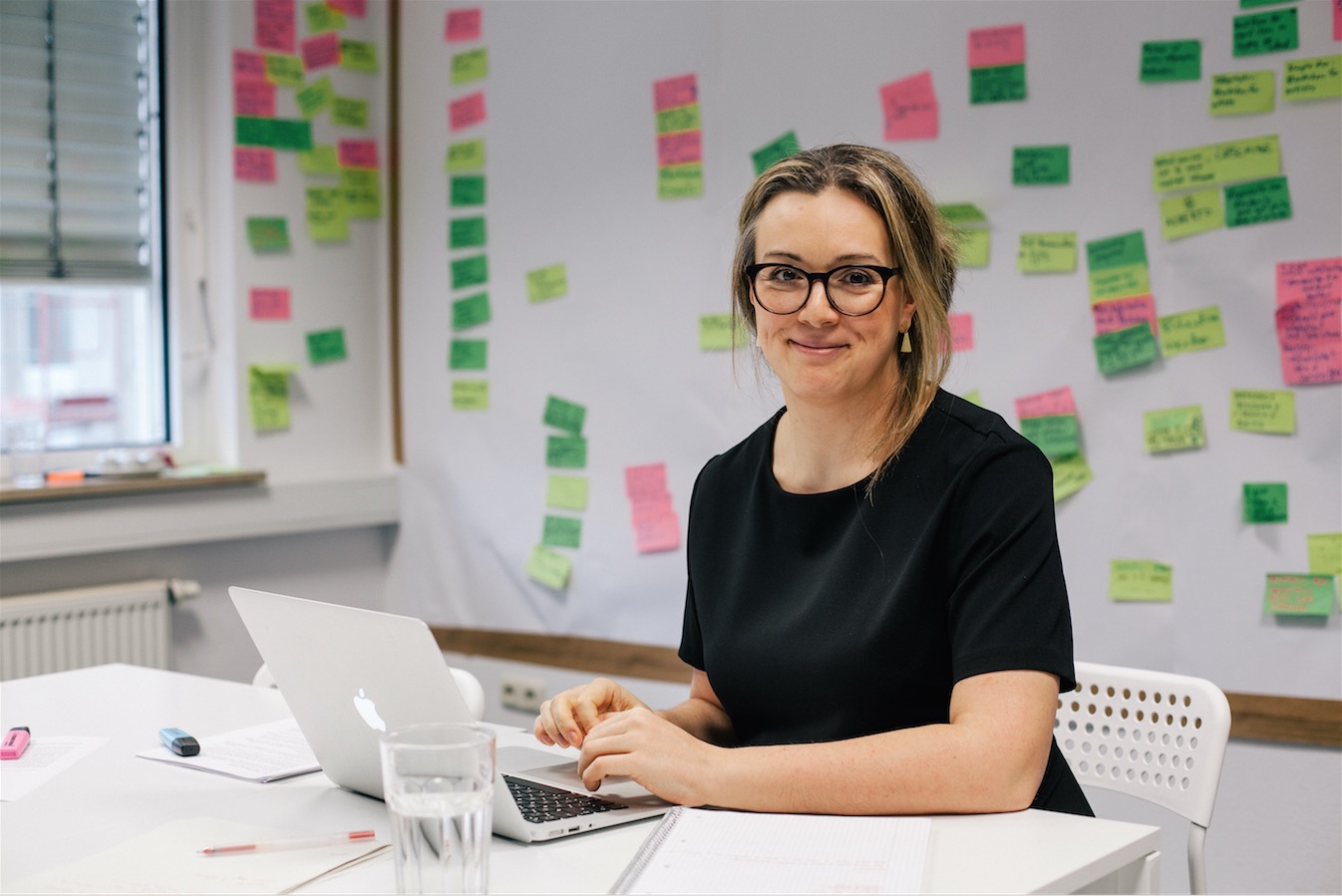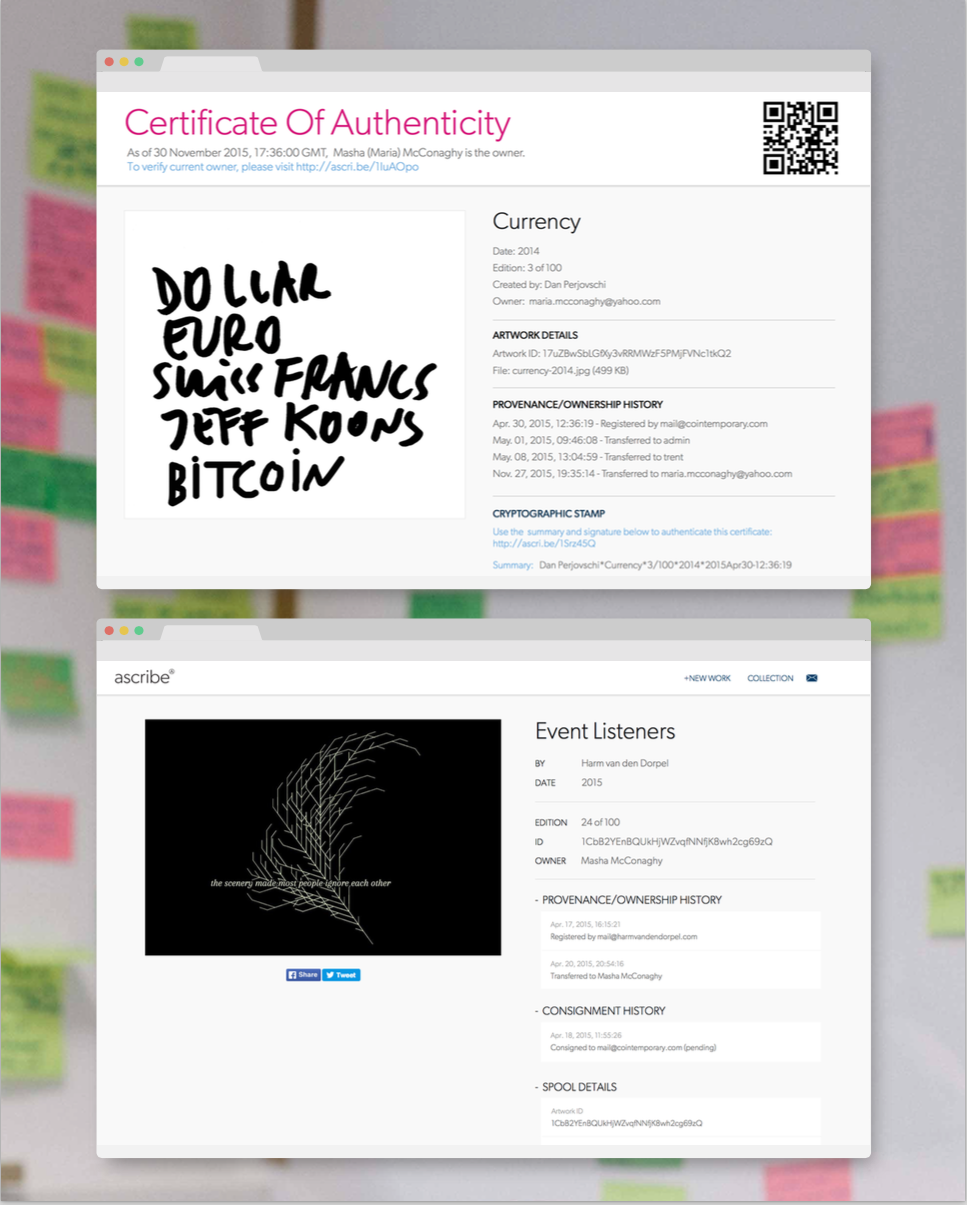Ascribing Art
Blockchain technology has the potential to bring authorship back to artists’ works worldwide. We spoke to Berlin-based Ascribe about their ingenious model of attribution

For all of the freedoms that the internet has brought us, there have been as many constraints. In some cases, the autonomy of the internet has diminished our preference for ownership. We only have to look towards the dominance of music streaming platforms to confirm that when offered it, free access wins over paying for goods.
The advent of the internet and mobile technology entirely changed the primary way in which content is distributed. With access to artefacts available in abundance, authorship over the distributed images inevitably became harder to keep a track of. And this is precisely what services like Ascribe are intending to change through a utilisation of Blockchain.
Blockchain is one of those things that takes longer than a simple sentence to understand. But we don’t need to fully understand it in order to reap the benefits. “We are using Blockchain because it has characteristics that are extremely important to us, like time stamping, immutability and authorisation,” explains Masha McConaghy, Chief Community Officer of Ascribe. “Immutability is this idea that you are putting something into the blockchain that can’t be deleted, this information is permanent and this idea of decentralisation means that there is no centralised corporation that controls it.”
Copyright and the internet have been at odds with one another ever since the latter came into play. While the web may have revolutionised the way we share content, it has simultaneously undercut attribution of authorship. For the first time, it seems that Blockchain is able to reclaim that authorship. In layman terms, it is simply a record of digital events. It’s a decentralised registry which maintains a continuously growing list of data records that are resistant to tampering or revision, even by its operators. It records events through different computer nodes, (a basic data point part of a larger network) which are geographically isolated from each other, allowing them to deliver a cryptographic process, (a secure, coded message), proving how the computer arrived at the outcome.
Thus far every interaction that we have online, whether it’s confirming an email has been sent or a review of our bank balance, relies on a central authority. Blockchain allows two parties to exchange and transfer digital goods in a completely transparent way, without having to rely on any external mediator.

Imagine if with a simple right click I can see a certain license of attribution. We provide a simple means of licensing and ensure that creators are compensated for their work Masha McConaghy, Ascribe
Ascribe was founded in 2014 by Bruce Pon, Masha McConaghy and Trent McConaghy, who come from a background of banking, hardware and art curation, respectively. Ascribe is a service that combines all three by providing a product that empowers all creators of digital content to truly own and securely track the history of their digital work. At last, artists can create authentic limited digital editions and securely share and easily transfer the rights of the work.
After speaking at long length with artists throughout her career, Masha McConaghy realised the value in having a copyright as soon as the work has been created. “We have intentionally made it so you don’t need to know how it works in the backend in order to benefit off it. Sometimes, when I talk to artists, it’s more about what they can do, the ability to timestamp your copyright, for example,” she explains. “Previously, in order to acquire a copyright you’d have to attend the copyright registries, but that takes time and money.”
Now, artists are empowered through the knowledge and authentication that an immediate, digital provenance provides. And Blockchain? “Think about Blockchain as if it was this big spreadsheet in the sky that no one owns, and yet at the same time everyone owns. Each time you write in it, you can’t delete from it, and that’s a hugely beneficial thing.” This is new technology that is now being harnessed in order to benefit those who were previously being undermined by its predecessor.
“How the internet works today is that you put something out there and it only goes one way. There is no link back to the creator, so at some point you lose attribution. Then what you find is that a lot of work on the internet is orphaned, you can never track them back to the original creator.”
Ascribe aren’t a market place, but they do play a part in powering other market places. “Think of us as an ownership processor, in the same way that you have PayPal as a payment processor,” McConaghy succinctly explains. “Imagine if with a simple right click I can see a certain license of attribution. We provide a simple means of licensing and ensure that creators are compensated for their work.”
With e-books, digital comic books, photographers, video artists, GIF artists and graphic designers all on their books, Ascribe’s stronghold at the moment may be in the digital art sphere, but that’s surely set to change. “We have physical art as well, a lot of painters use Ascribe. Sometimes the process starts digitally and takes a physical form and sometimes it takes a digital form and ends up in a physical state.”
The art world has faced plenty of hurdles when it comes to technology. In 1972 John Berger prophesied the struggle the art world faced when put up against modern means of production, “images of art have become ephemeral, ubiquitous, insubstantial, available, valueless, free,” he stated, encompassing not just fine art, but the arts as a whole. For one of the first times, technology has created the possibility to embolden artists through a reclamation of authorship, providing the means to attribute every art piece to its artist. Which to Ascribe, and no doubt plenty of artists, would be paradise.
“The most important aspect in the art world is authenticity. That bond between the artist and the artwork, and this chain of ownership, this provenance. Those are two major aspects for the value of art, so if we have this transparent ledger that can always show it, then that’s extremely valuable.


